In the aftermath of devastating wildfires, when forests stand charred and seemingly lifeless, an unexpected phenomenon unfolds. While most creatures flee from flames, certain remarkable species have evolved not merely to survive fires but to actively seek out and thrive in burned landscapes. These fire-adapted specialists represent nature’s resilience and the fascinating evolutionary pathways that develop in response to environmental disturbances. From insects with heat-sensing abilities to plants that require smoke to germinate, fire-dependent species challenge our perception that forest fires are wholly destructive events. This article explores the remarkable adaptations and ecological roles of organisms that prefer the blackened remains of fire zones to the lush canopies of intact forests.
The Black-Backed Woodpecker: Fire’s Feathered Friend

Among the most iconic fire-dependent species is the black-backed woodpecker (Picoides arcticus), a bird that has evolved specifically to exploit recently burned forests. With its jet-black plumage that provides perfect camouflage against charred tree trunks, this medium-sized woodpecker moves into burned areas almost immediately after fires have ceased. These specialized birds feast on the larvae of wood-boring beetles that invade fire-killed trees, using their powerful bills to excavate their prey from beneath the bark. Research has shown that black-backed woodpecker populations can increase up to 470 times in burned forests compared to unburned areas, demonstrating their clear preference for post-fire habitats. Their presence in a burned forest typically lasts between five to eight years after a fire, making them transient specialists that follow the pattern of fires across the landscape.
The Jewel Beetle’s Heat-Seeking Mission
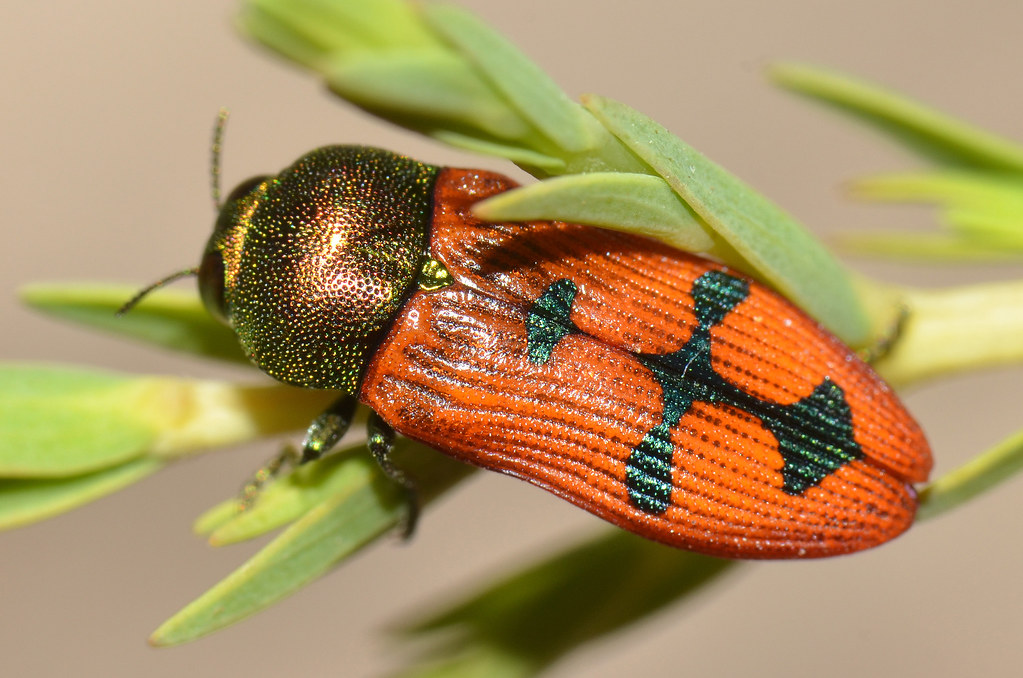
Perhaps no insect is more attuned to forest fires than the family of jewel beetles (Buprestidae), particularly species like Melanophila acuminata, aptly nicknamed the “fire beetle.” These remarkable insects possess specialized infrared-detecting organs called pit organs located on their thorax, allowing them to sense heat from fires up to 50 miles away. Upon detecting a forest fire, these beetles fly toward the flames, timing their arrival perfectly as the fire begins to cool. Female jewel beetles lay their eggs in the still-warm wood of freshly killed trees, where their larvae face minimal competition and predation while feasting on the nutrient-rich wood. Scientists have discovered that these beetles can detect infrared radiation at intensities as low as 0.6 calories per square centimeter per second, making their heat-sensing ability among the most sensitive in the animal kingdom. This extraordinary adaptation ensures jewel beetles are often the first insects to colonize burned areas, sometimes arriving while smoke still hangs in the air.
Morel Mushrooms: The Post-Fire Delicacy
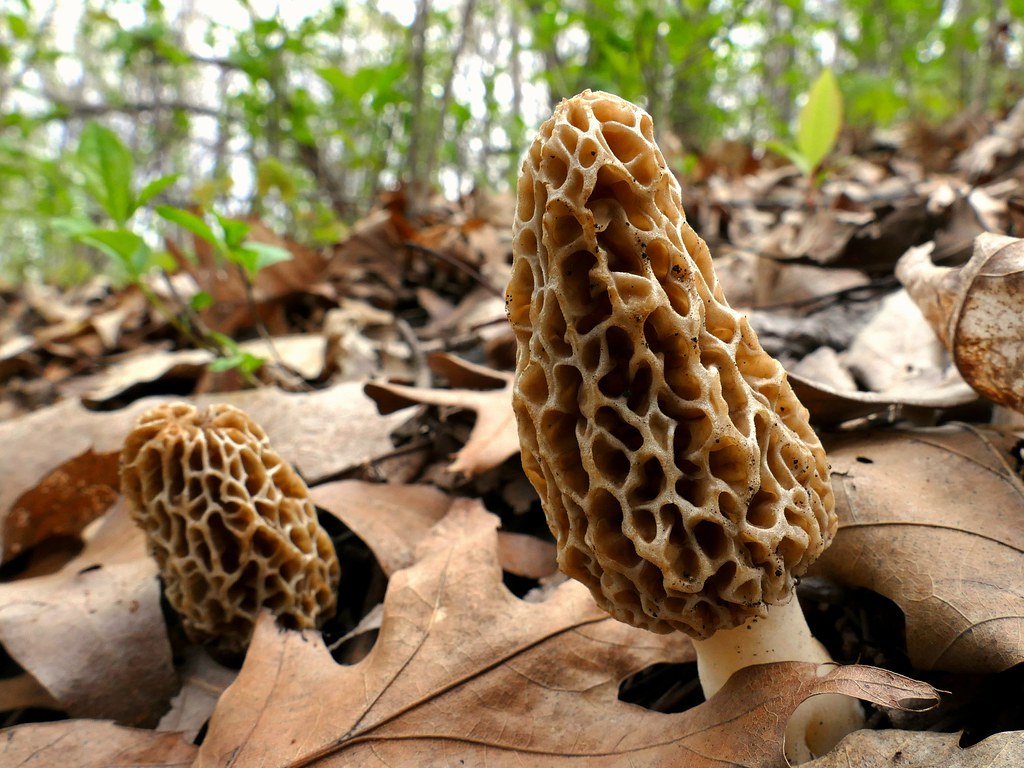
Among fungi, few species demonstrate as strong an affinity for fire zones as morel mushrooms (Morchella spp.), particularly black morels that appear in abundance during the spring following a forest fire. These prized edible fungi form a symbiotic relationship with trees, but when their host trees die in fires, they produce massive fruitings as a reproductive strategy to disperse their spores before their nutrient source is depleted. The heat from fires can stimulate dormant morel spores in the soil, while the nutrient-rich ash provides ideal growing conditions for these distinctive honeycomb-capped mushrooms. Commercial morel hunters and enthusiasts often track recent burn sites, as a good “burn morel” season can produce yields of hundreds of pounds per acre in intensely burned areas. The relationship between morels and fire is so well-established that in some regions, Forest Service maps of burn areas become treasured resources for mushroom foragers each spring.
Lodgepole Pines: Trees Designed to Burn
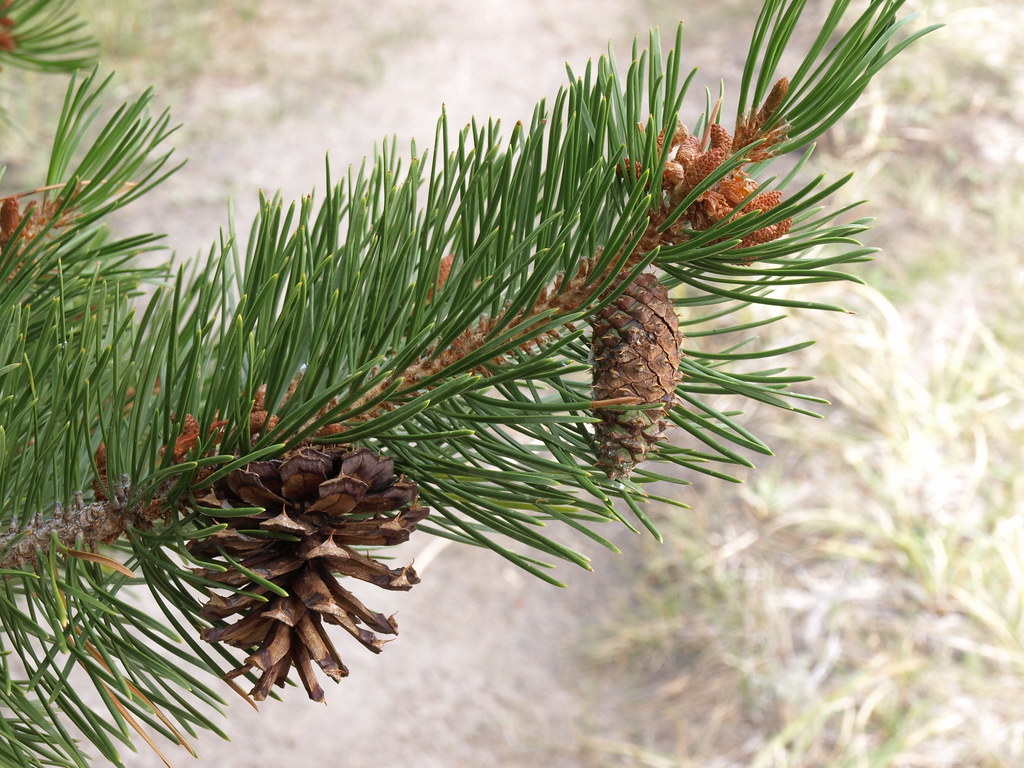
The lodgepole pine (Pinus contorta) represents one of the most fascinating examples of fire adaptation in the plant kingdom with its serotinous cones—specialized seed containers sealed with resin that requires intense heat to open. These remarkable trees essentially “bank” their seeds inside these fire-resistant cones, which can remain closed on the tree for decades, waiting for the precise environmental trigger of a forest fire. When flames sweep through a lodgepole pine forest, temperatures of approximately 113°F (45°C) melt the resin seals, allowing the cones to open and release their seeds onto the freshly cleared, nutrient-rich soil. This evolutionary strategy ensures that lodgepole pine seedlings face minimal competition as they recolonize burned areas, often creating dense, even-aged stands that dominate post-fire landscapes. In regions like Yellowstone National Park, where massive fires swept through in 1988, the subsequent lodgepole regeneration demonstrated the species’ remarkable fire-dependent lifecycle in dramatic fashion.
Fire Chaser Beetles: First Responders to Flames
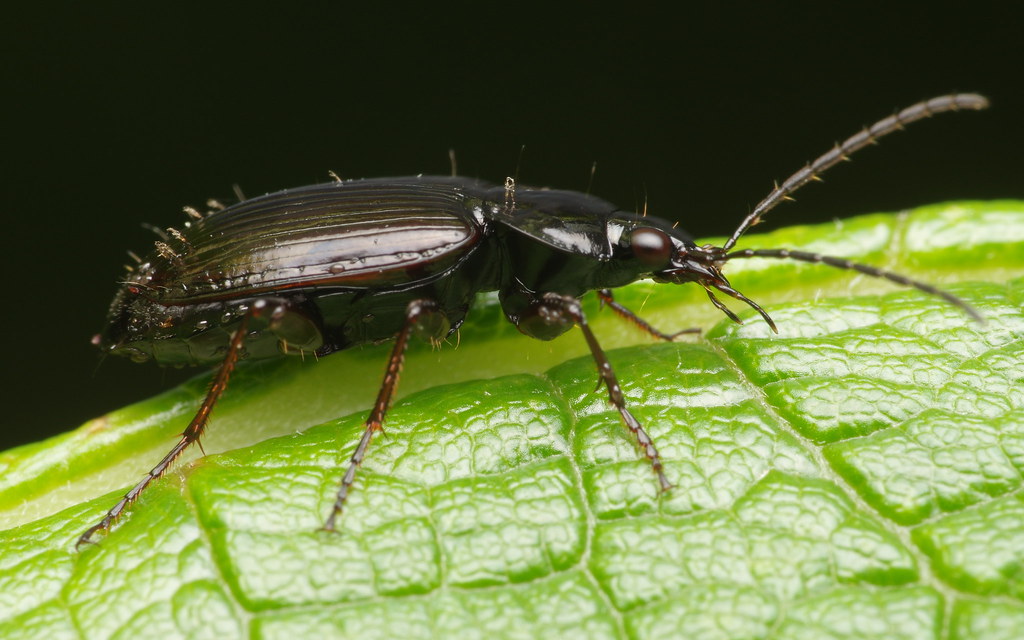
The fire chaser beetles (Melanophila spp.) have developed one of the most dramatic fire-seeking behaviors in the insect world, demonstrating an almost supernatural ability to detect and locate forest fires. These beetles possess specialized sensory pits that can detect infrared radiation emitted by forest fires from remarkable distances—some research suggests up to 80 miles away. Upon sensing a fire, these beetles immediately take flight toward the burning forest, often arriving while portions are still actively burning. The female beetles lay their eggs in freshly burned trees where their larvae will face reduced competition and predation while feeding on the nutrient-rich wood beneath the charred bark. Scientists studying these beetles have documented massive swarms descending on burn areas, with thousands of individuals sometimes covering fire equipment and firefighters during active wildfire suppression efforts. Their extraordinary sensory capabilities have even inspired the development of new infrared sensor technologies for detecting heat sources.
Pyrophilous Ground Beetles: Hunters in the Ash

Several species of ground beetles in the family Carabidae have evolved to specialize in hunting prey within recently burned forests, earning them the classification of “pyrophilous” or fire-loving insects. These predatory beetles, such as species in the genus Sericoda, possess remarkable heat tolerance and can enter burned areas while embers are still glowing to prey upon other insects fleeing from or disoriented by the fire. Their dark coloration provides perfect camouflage against the blackened landscape while their enhanced ability to detect prey movement in ash-covered terrain gives them a significant hunting advantage. Research has found that certain pyrophilous ground beetles have specialized sensory adaptations that allow them to detect minute changes in temperature and carbon dioxide levels, helping them locate prey that might be hidden beneath ash or in crevices. Some species are so specialized that they’re almost never found in unburned forests, making their entire lifecycle dependent on the regular occurrence of wildfire across their range.
Jack Pine: The Fire-Dependent Conifer
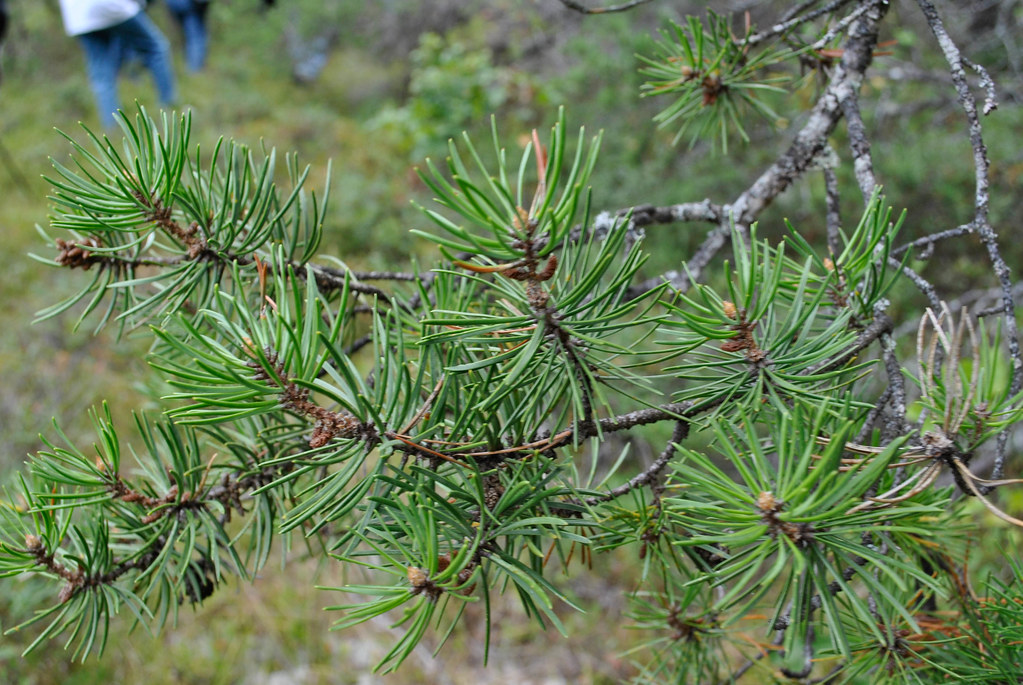
The jack pine (Pinus banksiana) represents another remarkable example of a tree species that has evolved to depend on forest fires for its reproductive success. Similar to lodgepole pines, jack pines produce serotinous cones that remain sealed with a strong resin until exposed to the intense heat of a forest fire, at which point they open to release their seeds. What makes jack pines particularly interesting is that they’ve become essential to the survival of the endangered Kirtland’s warbler, a rare songbird that nests almost exclusively in young jack pine stands that regenerate after fires. The relationship between these pines, fire, and the warbler demonstrates the complex ecological web that develops around fire-adapted species. In areas where natural fire has been suppressed, conservation efforts now include prescribed burns specifically designed to create the young jack pine habitat needed by both the trees and the warblers. This interdependence highlights how fire adaptation extends beyond individual species to shape entire ecological communities.
Fire Poppies: Blooms from the Ashes

Among the most spectacular floral displays following forest fires comes from fire poppies (Papaver californicum), wildflowers whose seeds can lie dormant in soil for decades—even centuries—until awakened by fire. These vibrant orange poppies possess seeds with extraordinarily thick coats that require the chemical scarification provided by smoke or the intense heat of wildfire to break dormancy. Within weeks after a fire sweeps through California chaparral or woodland habitats, previously invisible poppy seeds germinate en masse, creating breathtaking carpets of orange blooms across the blackened landscape. Scientists have discovered that chemicals in smoke, particularly a class of compounds called karrikins, trigger biochemical changes in the seeds that initiate germination after long dormancy periods. For some fire poppy populations, blooming events might occur just once in a human lifetime, making these post-fire floral displays both scientifically significant and culturally meaningful to communities recovering from wildfire impacts.
The Giant Sequoia’s Fiery Reproduction Strategy
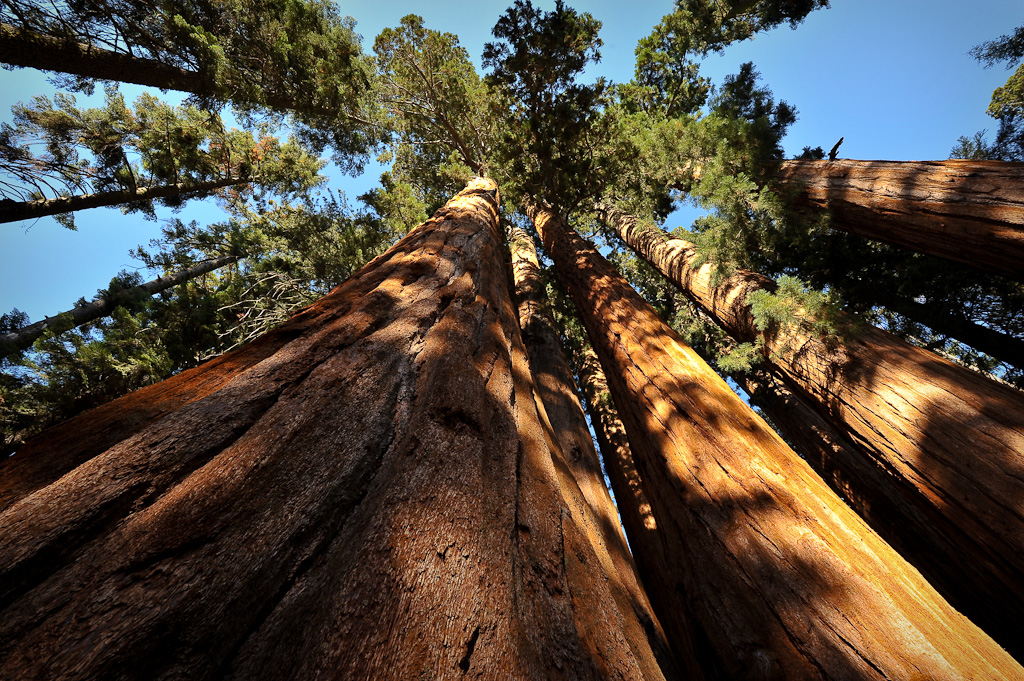
Perhaps no tree demonstrates a more majestic relationship with fire than the giant sequoia (Sequoiadendron giganteum), the world’s largest tree by volume and one of the longest-living organisms on Earth. Despite their impressive size and longevity, these ancient trees depend on periodic low-intensity ground fires to reproduce successfully. The thick, fibrous bark of mature sequoias provides exceptional insulation against fire damage, while the heat from fires helps release seeds from their small cones and clears the forest floor of competing vegetation and thick layers of duff. Additionally, the mineral-rich ash left behind creates an ideal seedbed for the tiny sequoia seeds, which require direct contact with mineral soil to germinate successfully. Historical records and tree ring studies indicate that natural fire regimes in sequoia groves typically included fires every 5-30 years, creating the perfect conditions for these giants to regenerate. The disruption of these natural fire cycles through a century of fire suppression has become one of the greatest threats to sequoia reproduction, leading park managers to implement prescribed burning programs to restore this essential ecological process.
Bracken Fern: The Fire-Opportunistic Pioneer
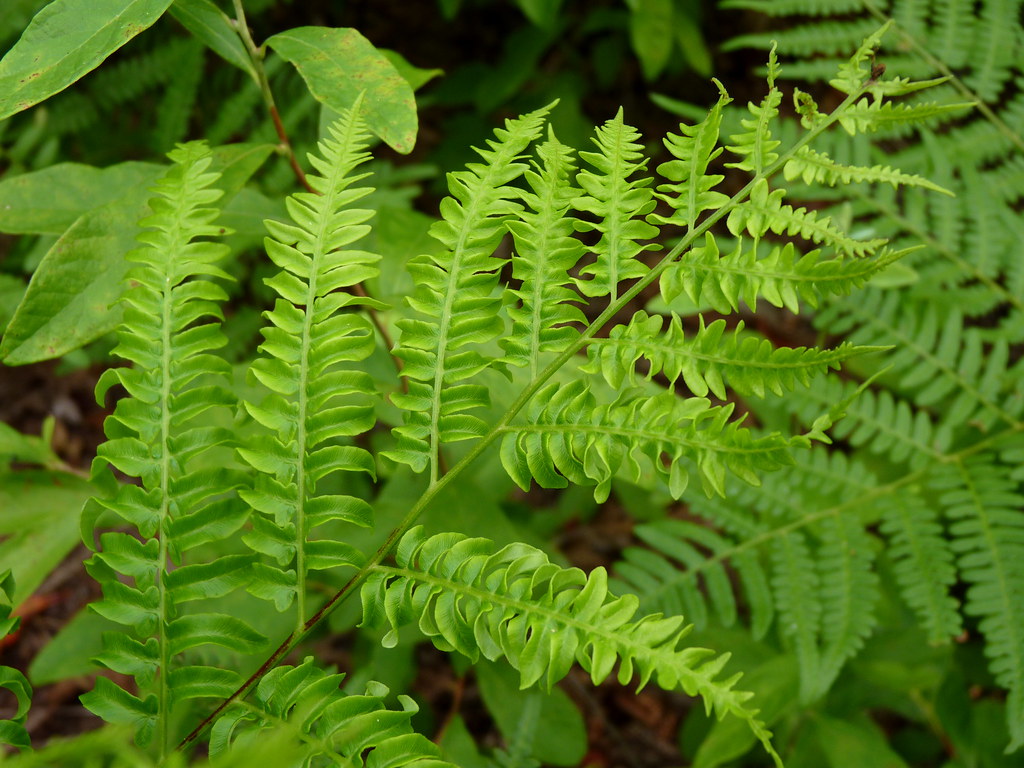
While many plants perish in forest fires, the bracken fern (Pteridium aquilinum) demonstrates an opportunistic relationship with burned areas, often becoming one of the first and most dominant plants to recolonize after a fire. This cosmopolitan fern maintains extensive underground rhizome networks that typically survive even intense crown fires, allowing it to rapidly resprout and claim territory before other plants can establish. The fern’s ability to thrive in post-fire conditions comes from several adaptations, including its deep-growing rhizomes that routinely survive temperatures that kill most other plant roots and its ability to rapidly mobilize stored nutrients. Research has shown that bracken fern can increase its coverage by up to 40% in the first growing season after a fire, creating dense thickets that can persist for years. Though sometimes considered problematic due to its aggressive growth and mildly toxic properties, bracken’s rapid colonization of burned areas helps prevent soil erosion during the vulnerable post-fire recovery period.
Pyrophilous Fungi: Fire-Loving Decomposers
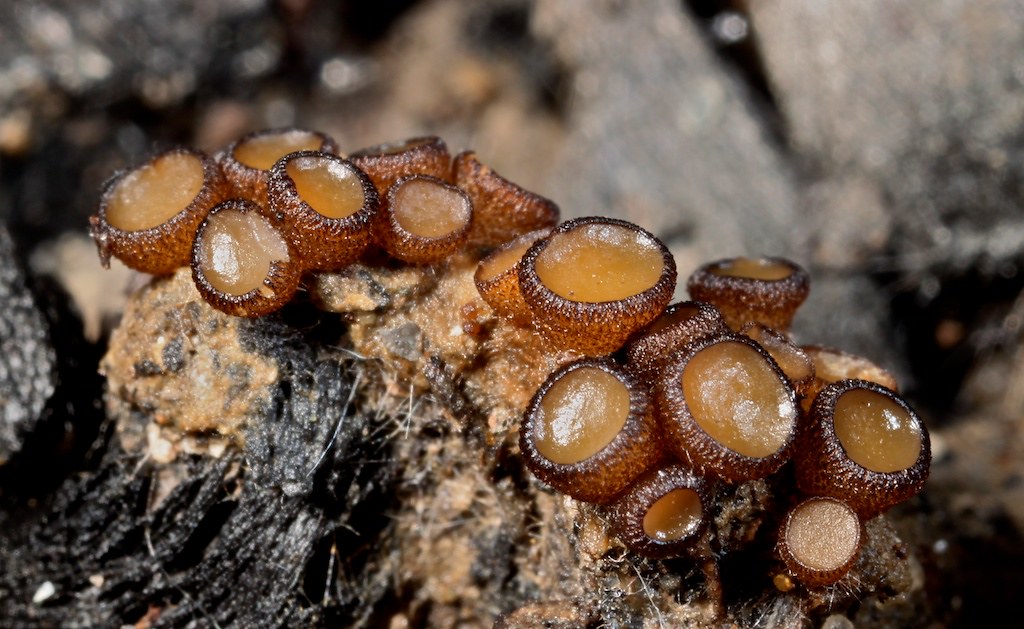
Beyond the familiar morels, an entire category of specialized fungi known as pyrophilous (fire-loving) fungi has evolved to colonize burned areas with remarkable speed and specificity. Species like Pyronema domesticum and Anthracobia melaloma appear exclusively after fires, often fruiting within days of a burn while the soil is still warm. These highly specialized fungi possess heat-resistant spores that remain dormant in soil until activated by the intense heat of forest fires or by chemicals in smoke and ash. Their rapid colonization of burned substrates plays a crucial ecological role in decomposing fire-altered organic matter and recycling nutrients back into the ecosystem. Microbiologists studying these fungi have discovered that some species possess unique enzymes capable of breaking down compounds created during wood combustion that most other decomposers cannot process. This specialized decomposition ability creates a crucial bridge in nutrient cycling after fires, helping to prepare the soil for the succession of plant communities that will follow.
The Ecological Importance of Fire-Dependent Species

The presence of fire-dependent species within ecosystems serves as compelling evidence that fire has been an integral part of many landscapes for millions of years. These specialized organisms play critical roles in post-fire recovery, often accelerating the return of biodiversity and ecological function to burned areas. For example, woodpeckers that excavate nest cavities in fire-killed trees create homes later used by dozens of other bird and mammal species, while fire-following insects provide essential food resources for returning vertebrates. The rapid decomposition performed by pyrophilous fungi and the soil stabilization provided by fire-adapted plants prevent erosion and nutrient loss during vulnerable post-fire periods. Conservation biologists now recognize that attempting to exclude fire from fire-adapted ecosystems not only diminishes biodiversity but can lead to more catastrophic fires as fuels accumulate unnaturally. This growing understanding has led to a paradigm shift in land management, with many agencies now working to restore appropriate fire regimes through prescribed burning and managed wildfire programs that support these unique fire-dependent species and the ecological processes they facilitate.
Conclusion

The remarkable adaptations of fire-dependent species reveal nature’s extraordinary resilience and the complex evolutionary relationships that develop between organisms and disturbance events. From beetles with infrared sensors to trees with fire-activated seeds, these specialists have transformed what humans often perceive as catastrophic destruction into ecological opportunity. Their presence reminds us that fire isn’t simply a destructive force but a natural process that has shaped ecosystems for millions of years. As climate change alters fire regimes worldwide and human development continues to fragment habitats, understanding and protecting these fire-dependent species becomes increasingly important. Their specialized niches and fascinating adaptations not only enrich our scientific knowledge but also offer valuable lessons about ecological resilience in the face of environmental change. By appreciating these fire-loving organisms, we gain a more nuanced perspective on forest management and conservation that embraces fire’s role as an architect of biodiversity rather than merely its destroyer.
